The companion series to our well-loved Best Practice Recommendations series.

10 Interactive and Informative PDFS designed for clinicians and advocates.
Already familiar with our popular BPR series? Then check out our Best Practice Recommendation (BPR) Briefs. They're a digest version of our foundations of Best Practice Recommendations for Skin and Wound Management, developed by experts and used by frontline clinicians, students and policy makers to inform their practice. BPR Briefs can be used by those already familiar with the full Foundations document—they offer quick and efficient access to “cues for care” as well as actions and policies that support best practice, plus they contain lots of hyperlinks that make them function more like a web-based app than a static resource.
The BPR briefs come in several forms to fit the needs of users. BPR Briefs: A Digest Version of Foundations of Best Practice for Skin and Wound Management is a 130-page book containing ten chapters. The full document can be purchased for download from the Wounds Canada eboutique for CAD $9.99 plus applicable taxes for members and CAD $12.00 for non-members. Individual chapters can be downloaded for free below.
Click on the titles and images below to read the full BPR Brief PDFs.
1: Skin: Anatomy, Physiology and Wound Healing
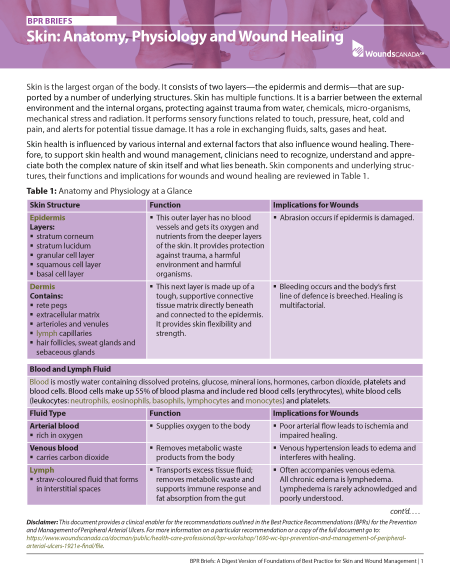
Knowledge of the anatomy and physiology of skin and the wound healing process is essential for health-care professionals to effectively prevent, assess, treat and manage wounds. In this PDF, we cover Anatomy and Physiology at a Glance, Normal Changes and Differences in Skin, and Phases of Wound Healing.
2: Prevention and Management of Wounds
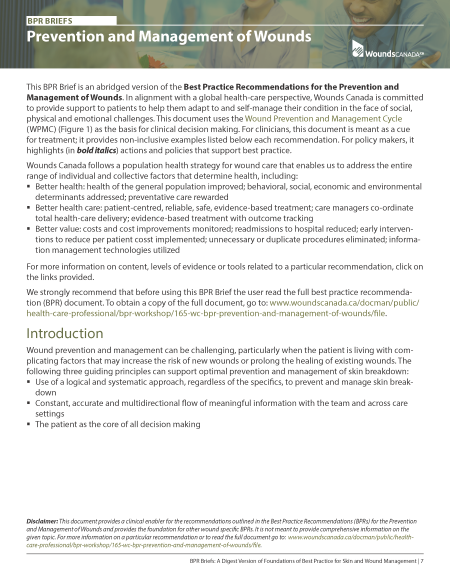
Wound prevention and management can be challenging, particularly when the patient is living with complicating factors that may increase the risk of new wounds or prolong the healing of existing wounds. Read the full PDF for information about the wound prevention management cycle and how to establish and implement a plan of care.
3: Pressure Injuries
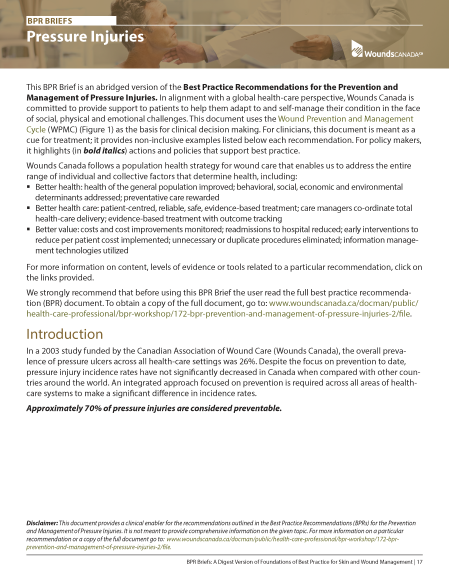
Can you guess what percentage of pressure injuries are considered preventable? The answer is 70%. Despite the focus on prevention, pressure injury incidence rates have not significantly decreased in Canada when compared with other countries. It's time to change that.
4: Skin Tears
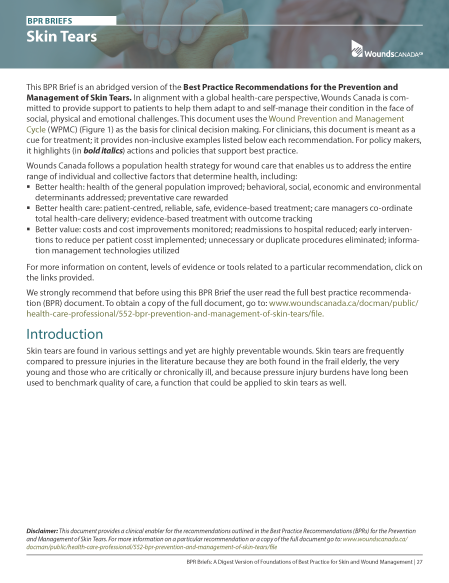
Even though skin tears are found in various settings, they're actually highly preventable wounds. Learn more about the prevention and management cycle for this wound type by reading the full PDF.
5: Surgical Wounds
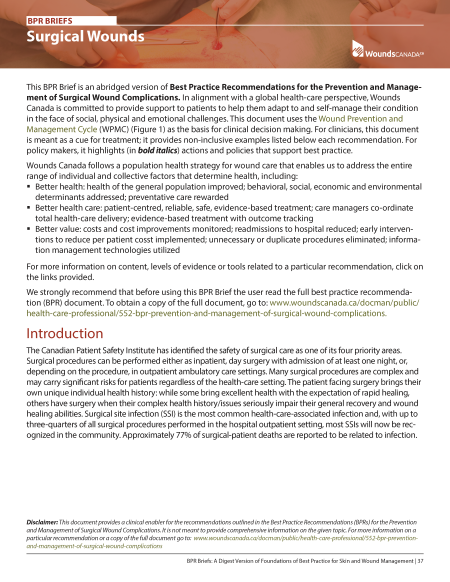
Did you know that approximately 77% of surgical-patient deaths are reported to be related to infection? Surgical site infection (SSI) is the most common health-care-associated infection. Education about the wound prevention and management cycle for SSI is crucial due to the complex and high-risk nature of many surgical procedures.
6: Diabetic Foot Ulcers
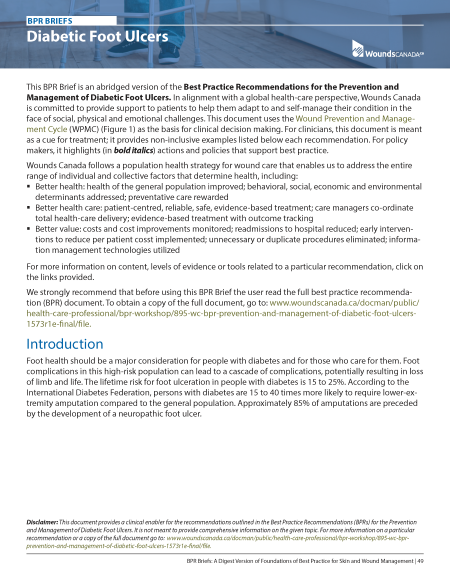
Did you know that people with diabetes are 15 to 40 times more likely to require lower-extremity amputation compared to the general population? And did you know that four out of five amputations are preventable? We all must do our part to end unnecessary amputations.
7: Burns
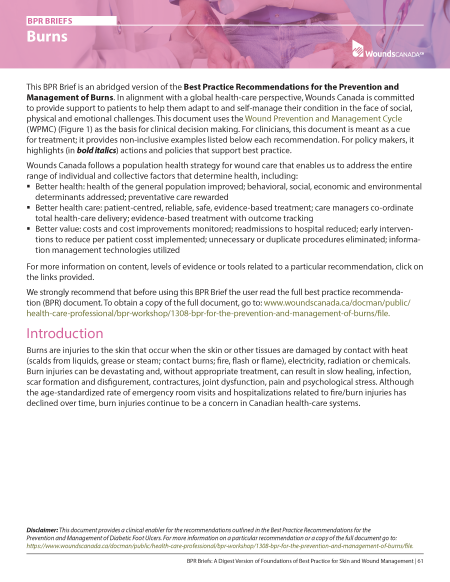
Burn injuries can be devastating and, without appropriate treatment, can result in slow healing, infection,scar formation and disfigurement, contractures, joint dysfunction, pain and psychological stress. Find out more about establishing and implementing a plan of care for patients.
9: Peripheral Arterial Ulcers
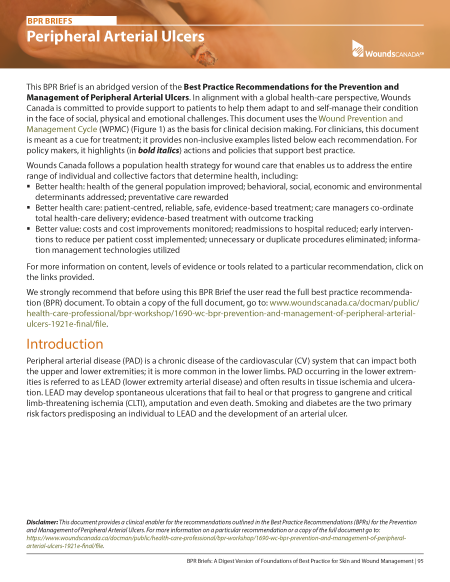
Did you know smoking and diabetes are the two primary risk factors predisposing an individual to the development of an arterial ulcer? Find out more about the wound prevention and management cycle for these wounds, which commonly occur in the lower limbs.
8: Venous Leg Ulcers
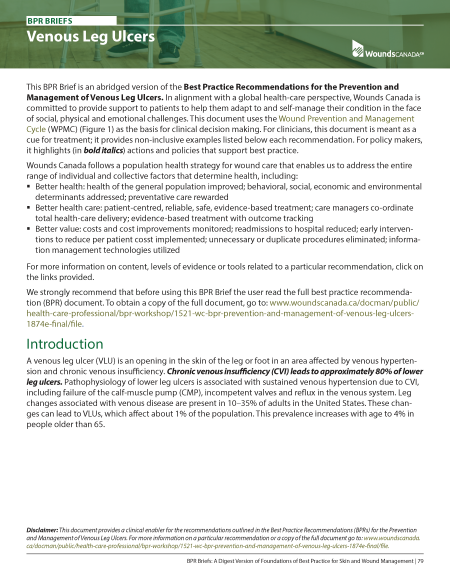
Did you know that chronic venous insufficiency (CVI) leads to approximately 80% of lower leg ulcers? Learn about risk factors, the wound prevention and management cycle, how to assess arterial flow and perfusion, and more in this PDF.
10: Moisture-associated Skin Damage
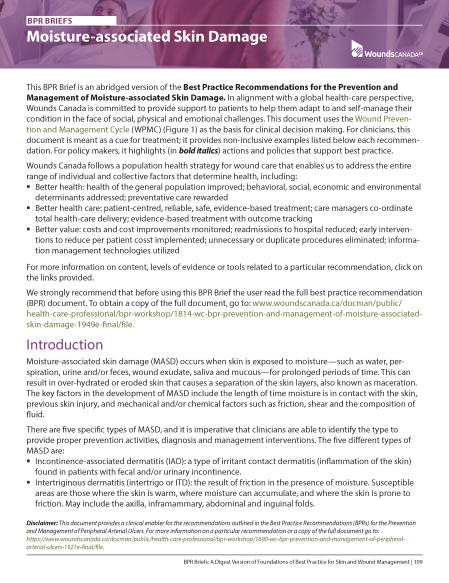
There are five specific types of MASD, and it is imperative that clinicians are able to identify the type to provide proper prevention activities, diagnosis and management interventions. Read the full PDF to learn more.
